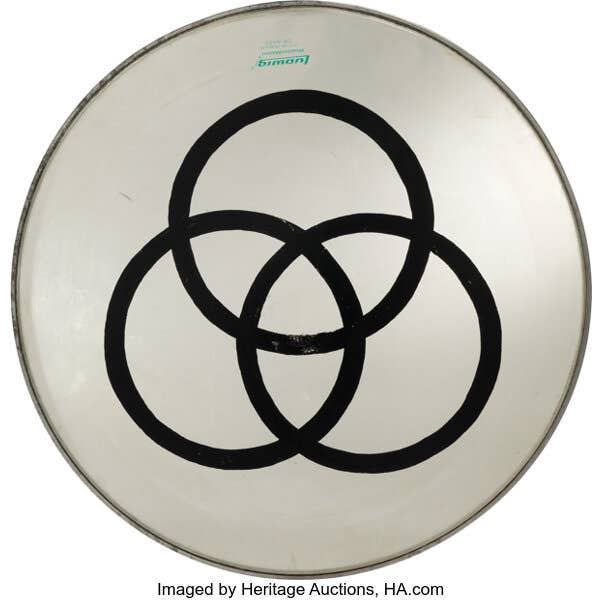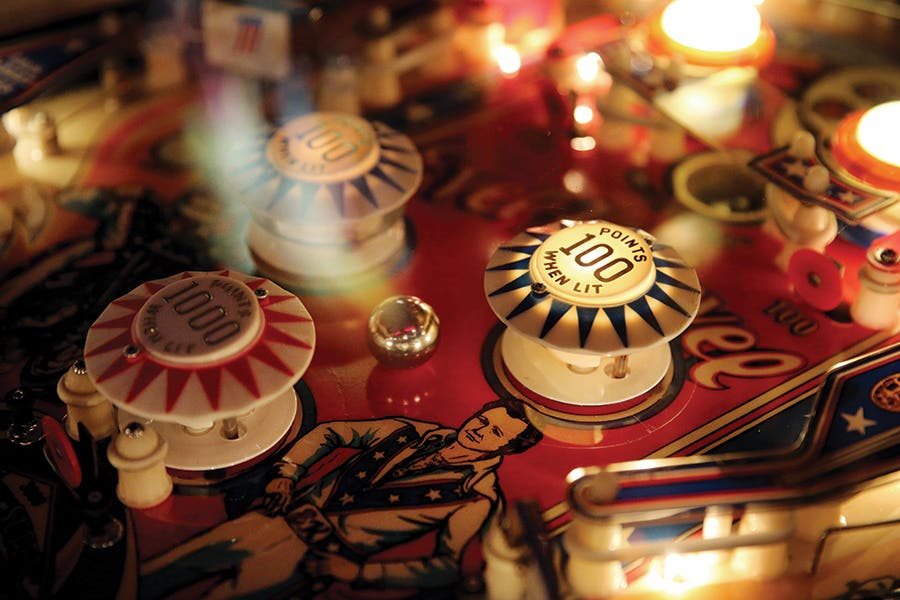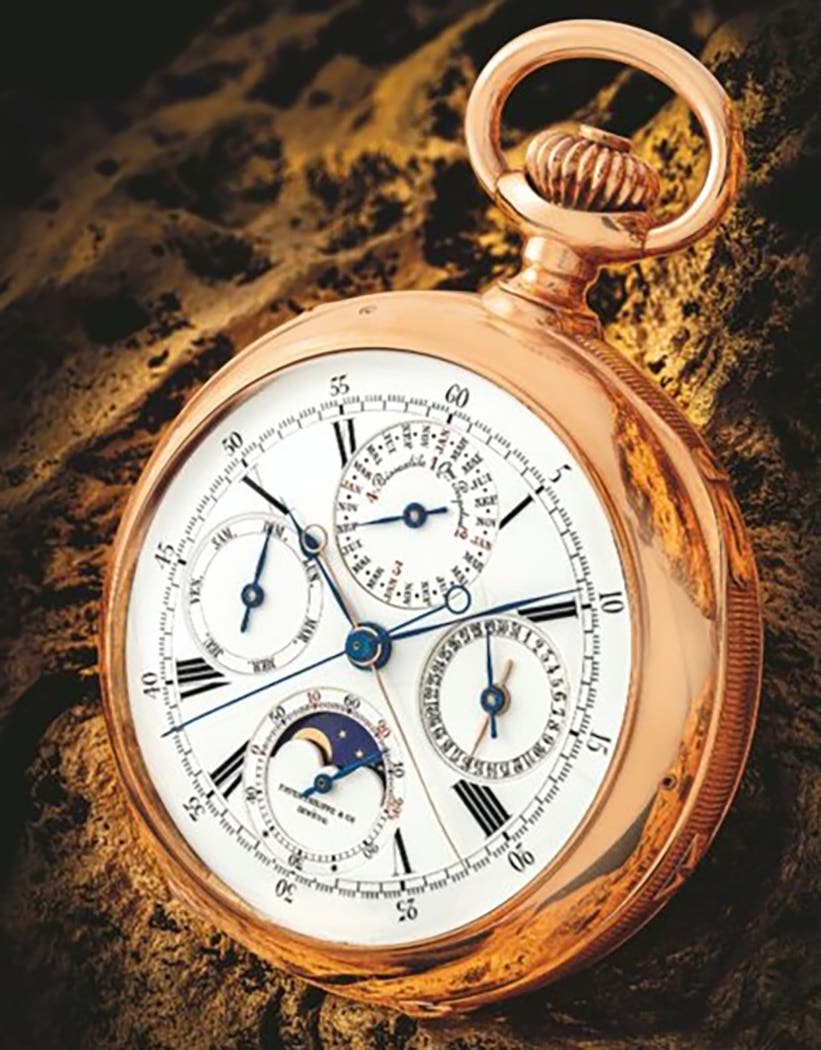Identifying hairwork and mourning jewelry
By Dr. Anthony Cavo & Nancy Schuring The popularity of hairwork (jewelry and art made of human hair) reached its pinnacle during the Victorian era. The incorporation of human hair…
By Dr. Anthony Cavo & Nancy Schuring
The popularity of hairwork (jewelry and art made of human hair) reached its pinnacle during the Victorian era. The incorporation of human hair in jewelry began during the Middle Ages and achieved extensive popularity during the Georgian era, but the Victorians embraced the concept with a renewed fervor.
Prior to the Victorian era, hair was typically inserted into mourning jewelry and often remained hidden within lockets, pendants, rings, and brooches whereas hair itself became jewelry during the 19th century. It is essential to note that not all hair jewelry or wreaths are mourning pieces, and not all mourning pieces contain hair. It is also important to be able to distinguish between mourning pieces and love tokens if you intend on collecting these unusual pieces; mourning pieces are more collectible and valuable than sentimental jewelry.
Hairwork jewelry
Watch chains, fobs, necklaces, bracelets, earrings, rings, and brooches fashioned as mementos, symbols of friendship and fidelity or love tokens were made completely of hair. Floral arrangements and elaborately framed wreaths made from the hair of deceased loved ones or from living family and friends were displayed in shadowboxes. During the 18th and 19th centuries, hair from a deceased loved one could also be pulverized and used to paint sorrowful images that were housed under glass for use in brooches, rings or necklaces.
Earlier mourning pieces are often not as somber, dark or even as maudlin as those seen during the Victorian Era, yet both Victorian and Georgian mourning pieces can depict dramatic, even heart-wrenching scenes of graves or mothers clinging to tombstones. Other, more subtle images such as willow or palm trees, urns, angels, cherubs, floral sprays of lily-of-the-valley or forget-me-nots, fountains, clasped hands, doves or even a faithful hound can help identify mourning jewelry and aid in distinguishing mourning jewelry from jewelry of sentiment. Another indication, discussed later in this article, that a piece may be a mourning jewelry is the composition of the piece itself. Is it made from gutta percha, jet, French jet, black onyx, bog oak or vulcanite? This would indicate that it is likely a mourning piece.
Locks of a loved one’s hair could be woven into a variety of patterns by professional hair weavers, although many pieces were made at home using instructions provided in fashion magazines and periodicals of the day such as Godey’s Lady’s Book and Magazine. In 1875 a book by Mark Campbell, Self-Instructor in the Art of Hair Work, was published and a cottage industry was born. Many women and young girls earned a living by making hair jewelry at home. The book provided more than 100 different patterns and designs for a variety of jewelry as well as describing the necessary tools and equipment such as braiding tables, bobbins, weights and wood or wire forms on which to braid. For those who collect hairwork jewelry, reprints of the book are still available as an essential guide for identifying the different braiding and weaving styles used throughout the 19th century.
Queen Victoria's influence
Although hair jewelry had been fashionable for many years its popularity increased significantly when it was learned that Queen Victoria was partial to the fashion. After the death of her husband, she wore a heart-shaped locket containing a lock of his hair over her heart and had a bracelet composed of nine heart-shaped lockets containing a lock of hair from each of her children. She also presented a bracelet made of her own hair to Empress Eugenie of France.
Of interest to note are some of the many trends popularized by Queen Victoria including hair jewelry, wearing black for funerals, sailor suits for children, white satin wedding gowns embellished with lace, and the incorporation of orange blossoms and myrtle leaves in the wedding dress.
Other historical influencers
Long before Victoria, however, royalty united hair and jewelry when sometime between 1596 and 1612 King Christian IV of Denmark presented his queen, Anna Catherine of Brandenburg, with a bracelet made of gold and braided hair. Other historical figures and celebrities that popularized hair jewelry were Napoleon, Admiral Nelson, Abraham Lincoln and Jenny Lind. In January 2011 a locket containing the hair of Admiral Nelson and his lover Lady Emma Hamilton (each married to different people) sold for £50,000 (~$65,000).
Other jewelry materials
Mourning jewelry may or may not contain hair and can be made of black enamel, gutta percha, thermoplastic, Berlin iron, jet, French jet, black onyx, bog oak, vulcanite, tortoise shell or cut steel.
Gutta percha is derived from the resin of the Palaquium gutta plant, which is called “getah perca” in Malay and translates as “sap of rubber.” The sap of these trees is a natural latex that is malleable, durable and dark brown to matte black in color that becomes rigid. Jewelry made from gutta percha is not carved but molded, which often results in discernible mold lines, especially when examined through a jeweler’s loupe. When gutta percha is rubbed briskly on coarse material it emits a rubber odor. It was first used in making jewelry during the 1840s as an inexpensive substitute for jet.
Thermoplastic is a composition of sawdust, shellac and dye and can be made in a variety of colors, although it exists mostly in black and, to a lesser extent, brown. Thermoplastic is also molded and was used primarily for photographic cases to house daguerreotypes and ambrotypes. Thermoplastic photo cases are often mistakenly identified as gutta percha, which was never used to make photo cases. Thermoplastic was used to make jewelry as well as hand mirrors, belt buckles, buttons, boxes, and even prosthetics. The malleable nature and dark black dyes used to color thermoplastic, which becomes solid when dried, made it perfect for producing mourning jewelry.
Berlin iron
Berlin iron, produced in Germany during the late Georgian to early Victorian eras is sand-cast iron with a black lacquer coat applied. Jewelry made from Berlin iron has a fine, lacy appearance with articulated pieces having a fluid characteristic as a result of different sections being connected by jump rings; solder was never used to construct Berlin iron jewelry.
Of all the mourning jewelry, those made of Berlin iron are probably the easiest to identify with a great deal of certainty. It is magnetic and sometimes stamped with the maker’s name. Geiss, Lehmann, Hossaur, Schott, and Devarannehe are well documented producers of Berlin iron pieces. The original form for each piece of jewelry was made in wax, which was then pressed into sand and the resulting impression was filled with iron. During his German Campaign of 1813, Napoleon confiscated many of these molds and sent them to France, subsequently, many pieces of Berlin iron jewelry were made in France and referred to as Fer de Berlin (iron of Berlin).
Initially Berlin iron was used to make cameos or jewelry with floral or mythological motifs. Later in the century it was used for mourning jewelry. Crosses always remained popular as did dangling earrings, lacy necklaces and panel bracelets. One point of interest regarding Berlin iron jewelry is its roots in German patriotism and anti-Napoleon sentiment. During the Napoleonic wars many German women sacrificed their gold jewelry to finance the war and were rewarded with Berlin iron replicas or Berlin iron jewelry inscribed, “Ich gab Gold für Eisen” (I gave gold for iron). Pieces thus marked are true treasures.
Jet
Jet is fossilized wood that is quite similar to coal. It is categorized as lignite – a precursor to coal. It is rare in the realm of jewelry and occurs throughout Northern Europe in dark brown to very dark black; it is also found in parts of Asia and North America. In England jet is known as Whitby after the English town in which much of the jet is mined. It has been used in creating jewelry for thousands of years. A considerable amount of what is identified as jet in the marketplace and online venues is actually not jet, but French jet, which is actually glass. Jet is not as dense as French jet and weighs much less, it is also warm to the touch unlike its glass counterpart.
Under a jeweler’s loupe, jet has characteristic naturally occurring fissures that will not be seen in the smooth surface of French jet. Natural jet can be carved and faceted and may bear the marks of tools such as saws or chisels; mold marks will never be found on true jet pieces, which helps in distinguishing jet from jet substitutes like vulcanite, gutta percha or thermoplastic. These facets reflect light rather than sparkle as does cut or faceted glass. The major difference decorative jet and jet meant for mourning pieces is the finish. Fashion jet jewelry is highly reflective whereas mourning jet has a less reflective, matte finish.
Black onyx is often mistaken for jet because it is heavy and cool and can be carved or faceted like glass. Much of the black onyx used in mourning jewelry is dyed chalcedony, which is something that can be appreciated when closely examined with the aid of a jeweler’s loupe.
Fossils, peat or turf are not substances that come to mind when one thinks of jewelry and yet, that is exactly the origin of bog oak, a substance used in mourning jewelry. Bog oak, which can be oak, pine, fir, or yew, is wood that has fossilized in peat bogs. Like jet, which is also fossilized wood, bog oak is also light and warm to the touch and can be dark brown to black; however, compared to jet it has a dull or matte finish. Bog oak can be mined from anywhere rich in peat fields but Ireland was the source of much of the bog oak used in 19th century mourning jewelry. Bog oak, like jet, will also bear tool marks and no two pieces will be alike.
Vulcanite
Vulcanite is derived from naturally occurring rubber that is combined with sulphur and heated; the process was patented on June 15, 1844 by Charles Goodyear as vulcanized rubber. Vulcanite is white and can be dyed a variety of colors to imitate more valuable, naturally occurring materials like jet, coral, and tortoise. Pieces made of Vulcanite are always molded and will show mold lines when examined closely. Vulcanite dyed black was commonly used for mourning jewelry. Like bog oak and jet, Vulcanite is warm to the touch and lightweight. Vulcanite could also be polished to a high sheen to imitate jet. The sheen, however, dulls over time to a dark brown.
Victorian rules and etiquette concerning mourning were rather precise, austere and rigidly defined. Tortoise shell was not suitable for deep mourning, which, rather simplified, was the first year after the death of a close relative or friend. After a year the grieving family entered full mourning and after two years half-mourning. During successive periods of mourning the mourners began to wear colors such as grey or mauve along with jewelry composed of tortoise or cut steel – this was known as “slighting the mourning.” Victorian etiquette for mourning is rather complicated and far too substantial for inclusion except with regard to jewelry.
Photography in mourning jewelry
No conversation about mourning jewelry would be complete without discussing the use of photographs in mourning pieces. Photography was introduced to the general public in 1840 and enterprising photographers saw an opportunity to increase interest in the new field. It wasn’t long before photographs were incorporated into lockets and rings and hair jewelry.
Mourning jewelry motifs
A vast amount of mourning jewelry is immediately apparent as such once you learn the various motifs of mourning. But there are many discreet clues that can help when attempting to distinguish fashion jewelry from mourning jewelry. As discussed above bog oak was often used for mourning pieces but those in the form of shamrocks and harps are not mourning pieces. A matte finish rather than a bright reflective finish may be the only clue. The hair bracelet of Jacob Westervelt previously discussed is not a mourning piece and fortunately there is a provenance to verify that. So how do we know when such a piece is a mourning piece without a provenance? Like Holmes, Marple, Poirot, and Marlowe we use our knowledge, experience, instincts and subtle clues.
When buying, selling or collecting mourning jewelry it is important to be able to distinguish the difference between jet, French jet, bog oak, Vulcanite, gutta percha, thermoplastic, enamel and onyx. There are a number of online websites that discuss ways to identify each of these substances and how to differentiate between them. I would advise you to attend shows and shops and examine as many pieces as possible with a loupe and remember that experience is better than premise.
Next steps
For those who are fascinated by hair work and hair jewelry Leila’s Hair Museum in Independence, Missouri [https ://bit.ly/2LA36Xs] houses the largest collection of such pieces. Visit Leila’s Hair Museum online or better yet, visit in person. If you are traveling in the area it is well worth a detour.
Remember, attend shows and shops, keep your eyes open, handle with care, use your loupe and you will become adept at discerning the various types of mourning jewelry and you may find yourself a previously unidentified treasure.
Dr. Anthony J. Cavo is an honors graduate of the Asheford Institute Of Antiques and a graduate of Reisch College of Auctioneering. He has extensive experience in the field of buying and selling antiques and collectibles; at age 18, he became one of the youngest purchasers and consigners of antiques and art for a New York auction house. Dr. Cavo is an active dealer in the antiques and collectibles marketplace in the U.S. and abroad.
Nancy Schuring founded Devon Fine Jewelry [www .devonfinejewelry.com] over 40 years ago from a love of jewelry, gemstones and design. Her comfortable showroom displays a large selection of colored gemstones, diamonds, and one-of-a-kind Devon Originals. Her love of history created a lifelong fascination with antique jewelry. Her travels have taken her around the world to buy gems in Africa, South America, and Asia. She also founded the Devon Foundation [www .devonfoundation.com] to provide lapidary scholarships to young people in gem-rich countries.
This article was originally published in Antique Trader magazine. If you like what you’ve read here, consider subscribing to the print or digital versions of Antique Trader it’s available for $26 per year (print) or $20 per year (digital) to receive 24 issues.
Learn more about this subscribing>>>
Dr. Anthony J. Cavo is an honors graduate of the Asheford Institute of Antiques and a graduate of Reisch College of Auctioneering. He has extensive experience in the field of buying and selling antiques and collectibles. Cavo is also the author of Love Immortal: Antique Photographs and Stories of Dogs and Their People.








